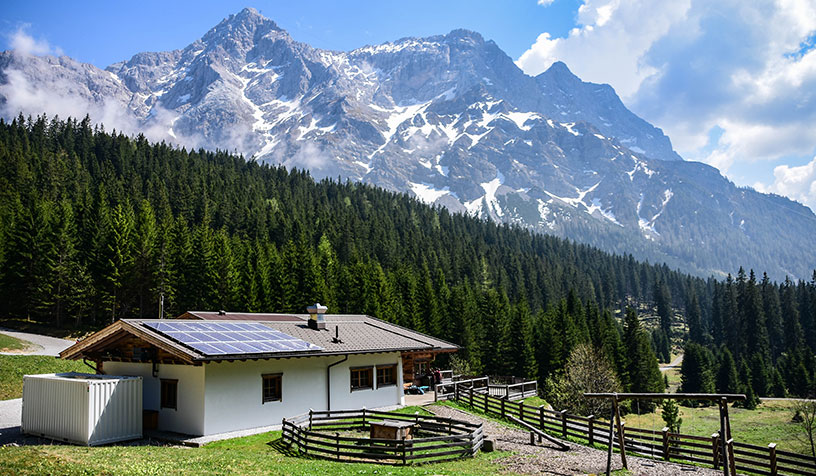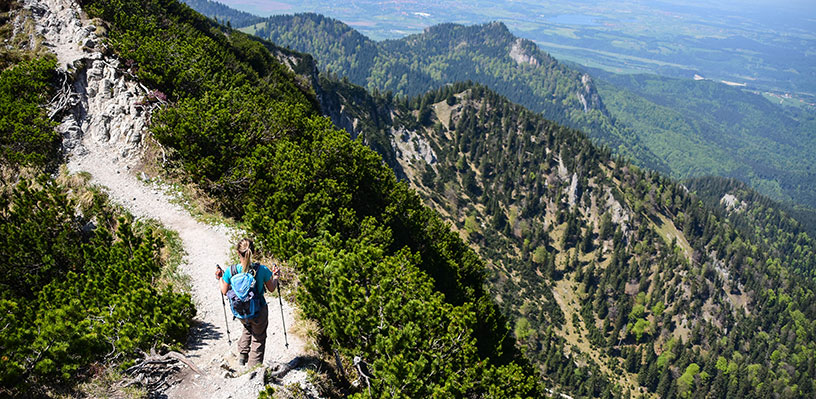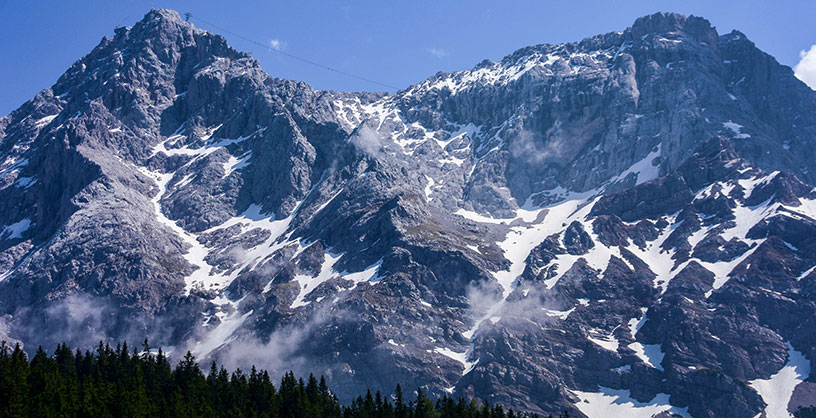Bavarian hiking trail adventures
Owing to a bad winter and my naïve Australian self-thinking, you can hike in Europe at any time of the year. My springtime arrival in Germany was a few weeks too early for planned high-altitude mountain treks. But not to worry, it turns out there are hiking alternatives to be found in the German state of Bavaria that are perfect for early bird hikers like me – you just have to know where to look.

Bavaria is home to turquoise lakes, cute alpine towns, soaring snow-capped mountains and moody woods – making for some epic Instagram worthy hiking adventures.
In the springtime months of April and May, you’re still likely to experience warm, clear days – but there still might be metres of snow above 2,000 metres that will limit your hiking opportunities.
Luckily I’ve done the research for you. Here’s three hiking trails you can do in the spring time while you wait for the snow to thaw in the Alps – as well as some other activities that will get you some postcard-perfect shots.
Getting There
Bavaria’s capital is Munich (also known as the home of Oktoberfest!) – and you can easily use Munich as a base with all these hikes about an hour’s drive from the capital.
You can hire a car or it’s also possible to access these hikes by train – some of the trailheads start right near the train station.

Hiking Trails
Herzogstand to Heimgarten Circuit
The hike up the peaks of Herzogstand and Heimgarten was my favourite hike in Bavaria.
This day hike starts at 800 metres above sea level at the Lake Walchensee cable car station, and from there you take a winding trail up to the summit of 1,731 metre Herzogstand.
The easy to follow switchback trail takes you through the woods with many glimpses down to the blue waters of Lake Walchensee.
Due to the switchback nature of the trail, it’s an easy gradient as you ascend upwards – first to a mountain hut, before turning left to ascend up more switchbacks to the summit.
From the summit of Herzogstand, it’s time to tackle a narrow ridge line to reach the summit of 1,790 metre Heimgarten.
First you descend down, then it’s a gentle undulating walk for about 45 minutes before a steady but short uphill section to reach the summit of Heimgarten.
Throughout the hike, you’ll get incredible views over Lake Walchensee and the Bavarian Prealps and Alps.
On a clear day you’ll be able to see Munich and also the mountain ranges in neighbouring Austria.
The circuit covers about 15km and will take about 6-8 hours depending on your fitness and rest breaks.
It can also be done in reverse and it’s also possible to take a cable car one way if you don’t want to hike the whole route.

Zugspitze and Lake Eibsee View
My German friends and I made up this hike as we went along. With our Plan A and B falling through due to cable car maintenance and trail closures, Plan C was to hike in search of a magic view of Zugspitze – Germany’s highest mountain. And we found it!
Towering 2,962 metre Zugspitze straddles the border of Germany and Austria.
The trail for a panoramic view starts from the carpark at Lake Eibsee. Follow the signs to Eibseeblick, which will take you up a steep ski slope, along some mountain bike trails, and then up into the woods.
You’ll then come out a mountain hut – on the Austrian side.
From there, you’ll get a magic view of Zugspitze from the hill behind a mountain hut.
The best views for Lake Eibsee are from the ski slope on your way up to the Zugspitze view.
This hike will take about 3-4 hours round trip.

Five peaks loop above Lake Tegernsee
Want to hit the summit of five peaks in one day? On a day hike from Lake Tegernsee you can do just that.
The hike starts from the Tegernsee Train Station, located at 500 metres above sea level.
You then proceed over the summits of five peaks ranging in elevation from 1,207 metres above sea level to 1,448 metres.
You can hike in either direction, however, I started hiking with my friends in an anti-clockwise direction up to the summit of Riederstein, which stands at 1,207 metres above sea level and is topped with a church and a great view.
On a clear day, you’ll get views across the nearby mountain ranges and over Lake Tegernsee from Riederstein.
The hiking trail is a continual steep up and down as you reach the summit of the five peaks including Kreuzbergalm, Gindealm and Schliersee.
The second peak hiking the trail in an anti-clock wise direction was 1,448m Kreuzbergalm, which is the highest elevation you’ll reach on this trail. Unfortunately, thick cloud enveloped my group at this point so I don’t know what the views were like!
You can stop for a break at the mountain huts scattered near the trail along the way. Some will be open serving food and drinks, however, some will still be closed in early spring but you can take a break on the outdoor seating.
The route covers a distance of about 20km and will take hikers about 8-10 hours depending on your fitness, photos and rest breaks.
Once you’ve summited your fifth peak, follow the signs down to Tegernsee and you’ll end up back at the train station.

Additional activities
Many mountains in Bavaria are served by cable cars, however be prepared for cable cars to be closed for maintenance in the spring months once ski season comes to an end.
If the cable cars are open, consider heading up to the summits of Zugspitze, Alpspitze and Kreuzeck. Tickets start from €17 ($29.12 NZD one way) depending on the cable car line you choose and how high up you go.
While the lakes are too cold to take a dip in early spring, you can also enjoy the lake views by walking around the perimeter of the many lakes or you can even hire watercraft.
You may also be able to hike in the gorges of Partlach and Hollental. At the time of writing, the Partlach Gorge opens to hikers at the end of April while the Hollental Gorge opens in mid-May.

Things You Should Know
- It’s possible to reach the trailheads of these hikes by train, however you’ll have more flexibility if you have a car. Car parking attracts a small fee – usually about €3 ($5.14 NZD).
- At the start of spring, some mountain huts will still be closed so make sure you bring enough food and water on your hike to last the whole day (who doesn’t love a picnic on a mountain!). It’s recommended to bring at least 2L of water.
- While the snow may not have melted on all the mountains yet, springtime in Germany can still be warm. Make sure you bring a hat and sunscreen. But you will also need to bring a warm jacket as mountains breeze can be icy as they flow across the snow, and weather conditions can change from hot to cold quickly in this region.
- If your plans hinge on a cable car trip, check that the cable cars are running as they are often closed for maintenance in early spring.
Lisa Owen is a pint-sized Australian following her dreams to travel to as many places as she can, and loves to share her photography, travel hacks, hiking adventures, and food discoveries along the way. At last count, she has travelled to more than 70 countries in between working in public relations and discovering hidden gems in Australia's great outdoors. Instagram: @thelittleadventurer. Facebook: The Little Adventurer Australia.
The views, opinions and positions expressed by the author and those providing comments are theirs alone, and are meant as travel inspiration only. They do not reflect the opinions of Cover-More Insurance. You should always read the Policy Documents available from your travel insurance provider to understand the limits, exclusions and conditions of your policy and to ensure any activities you undertake are covered by your policy.